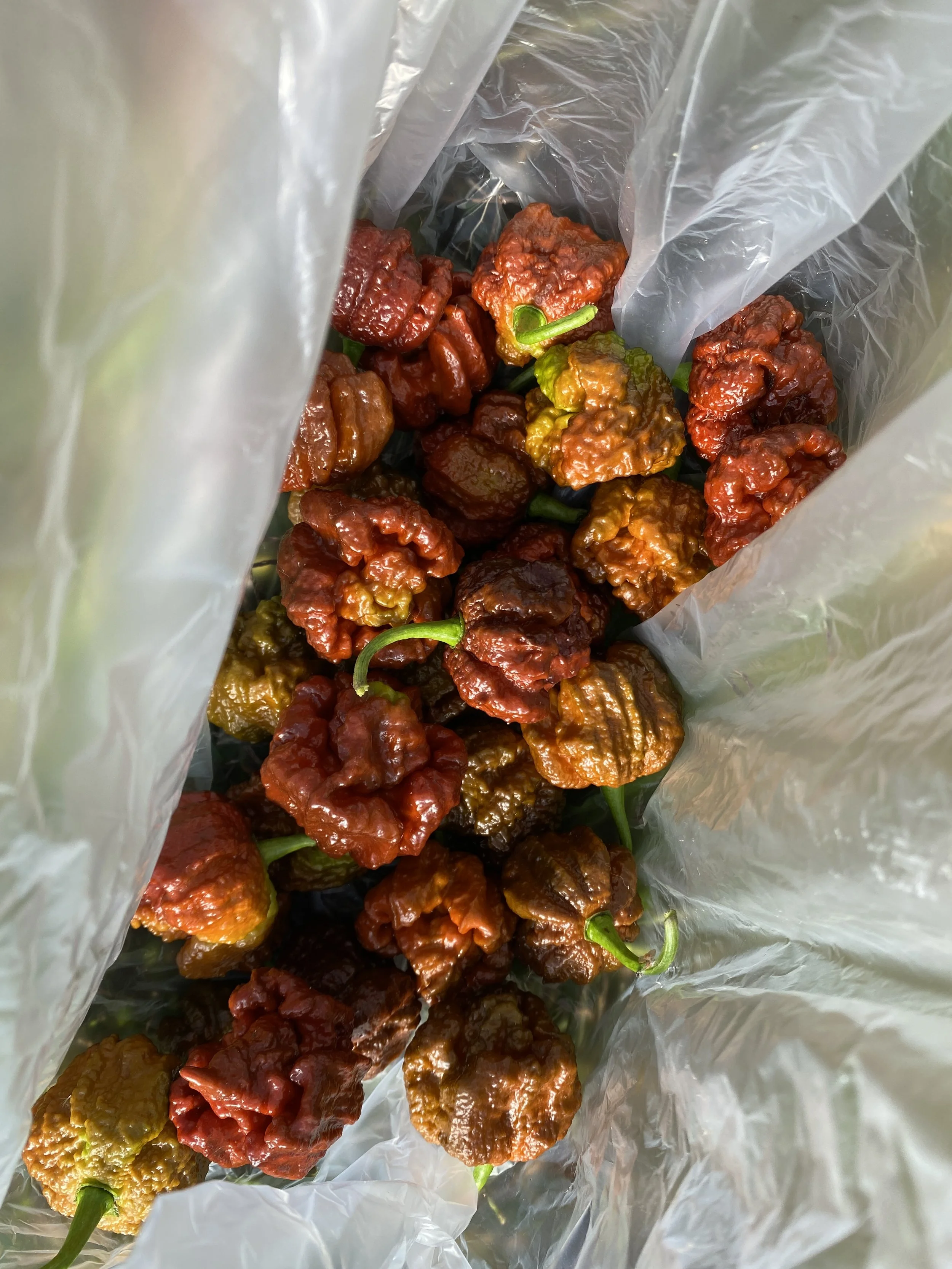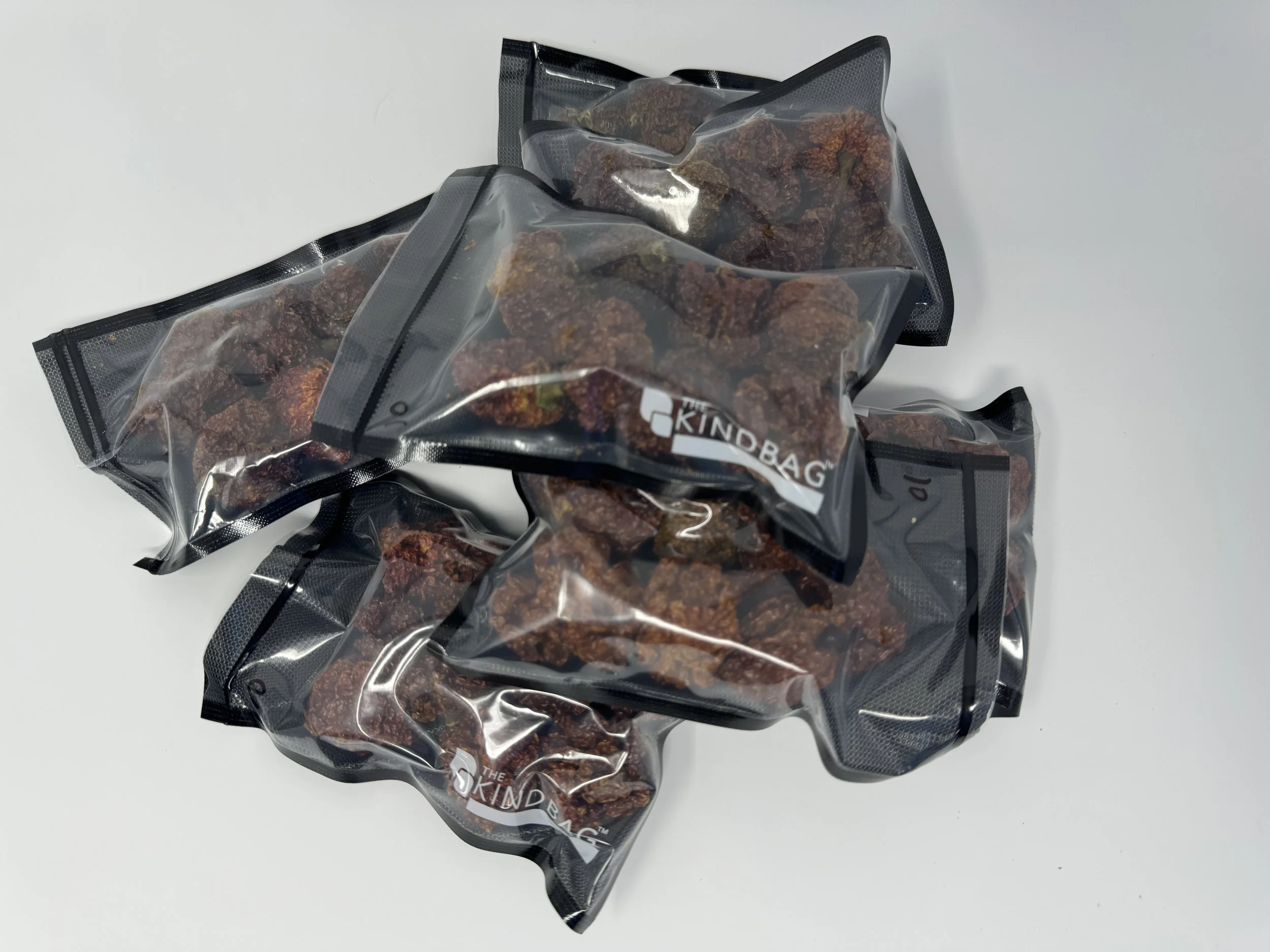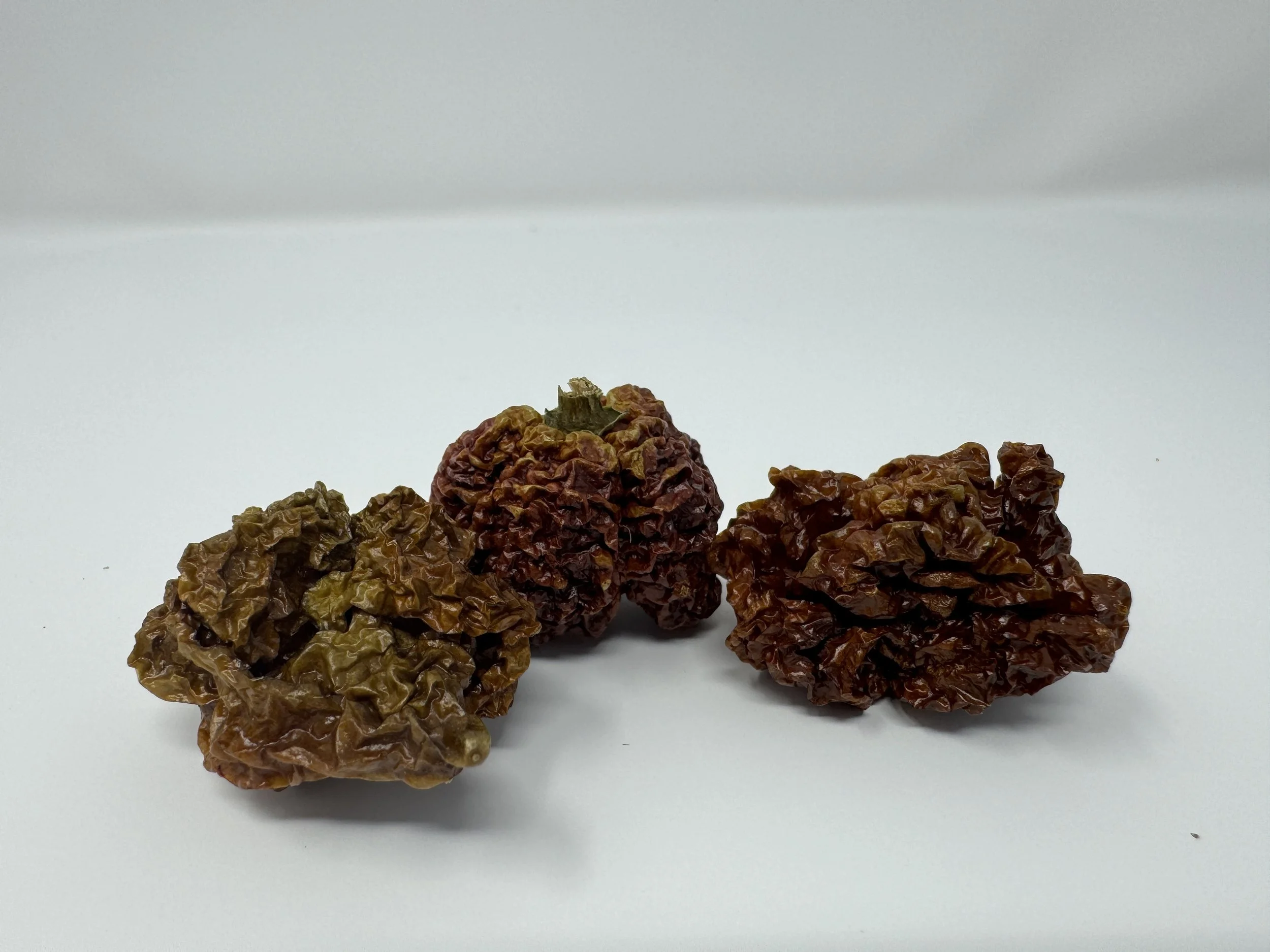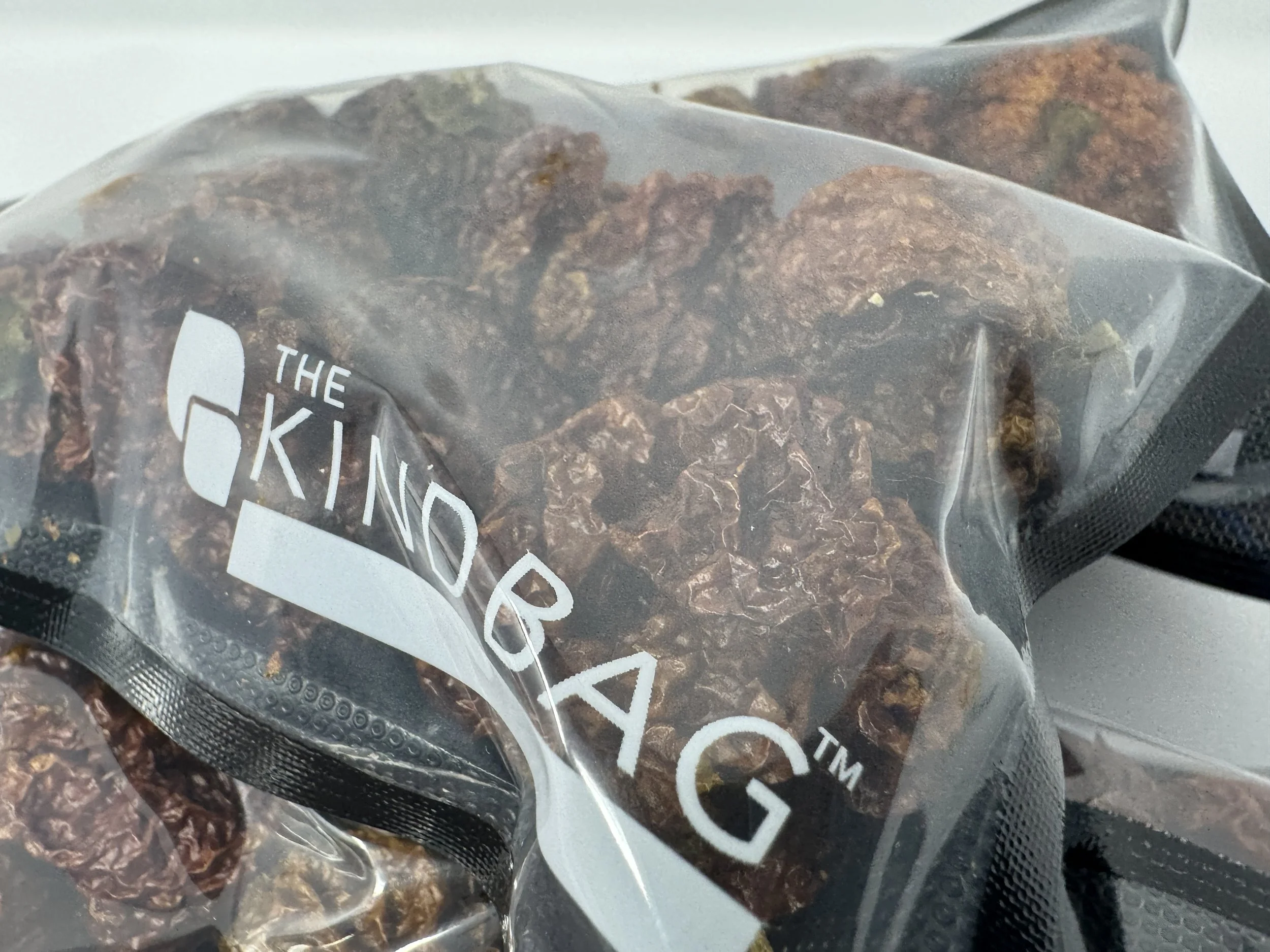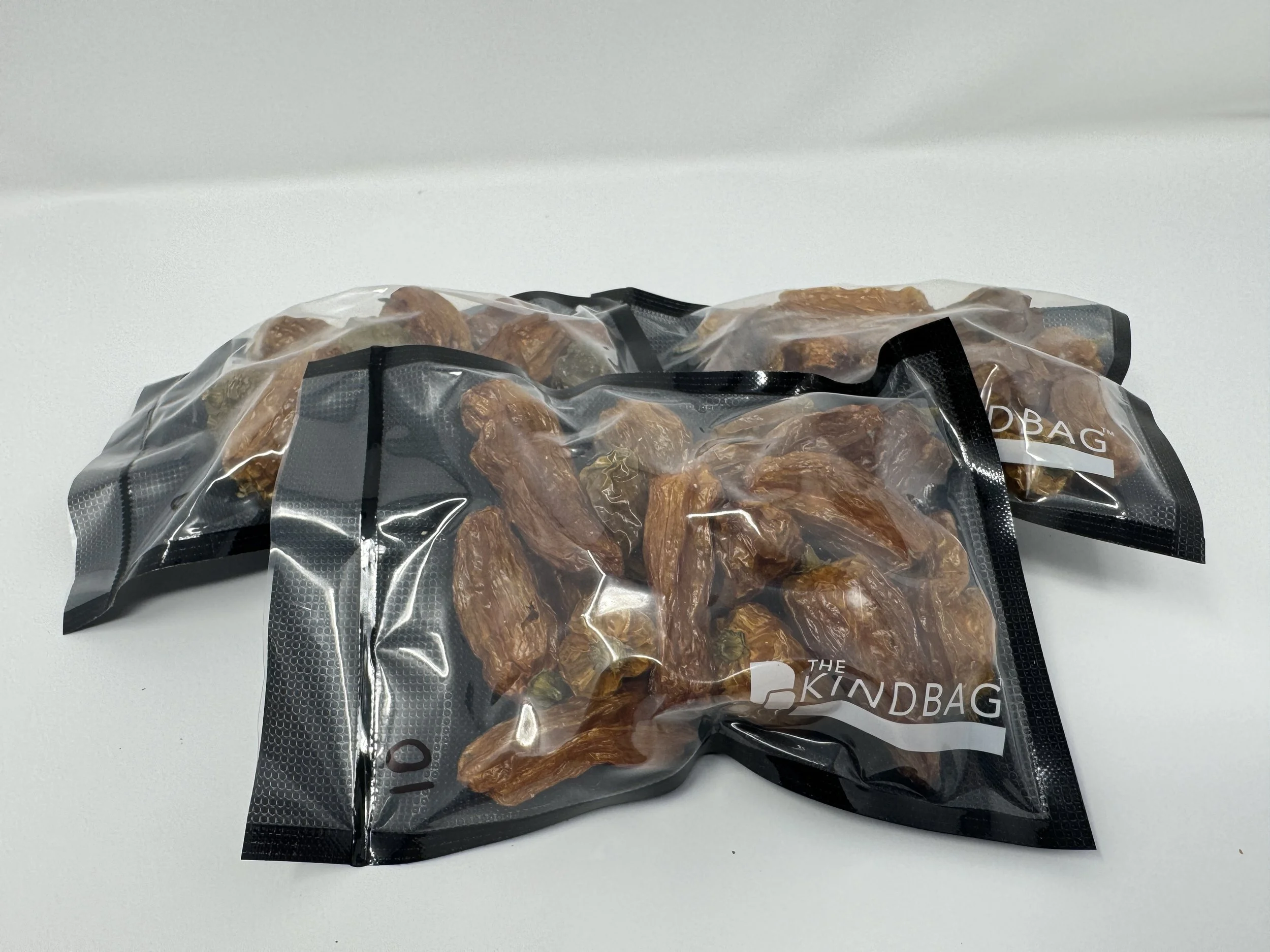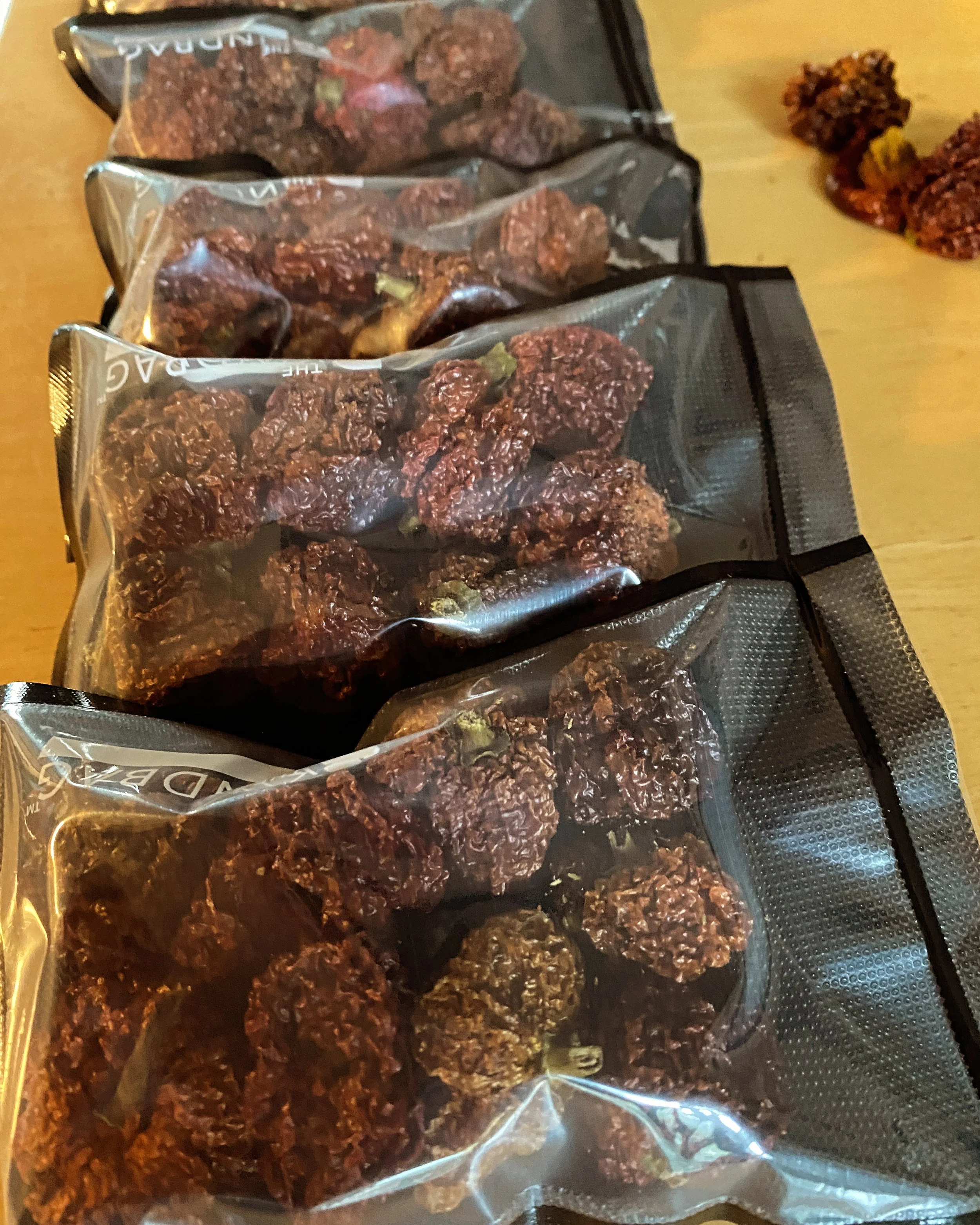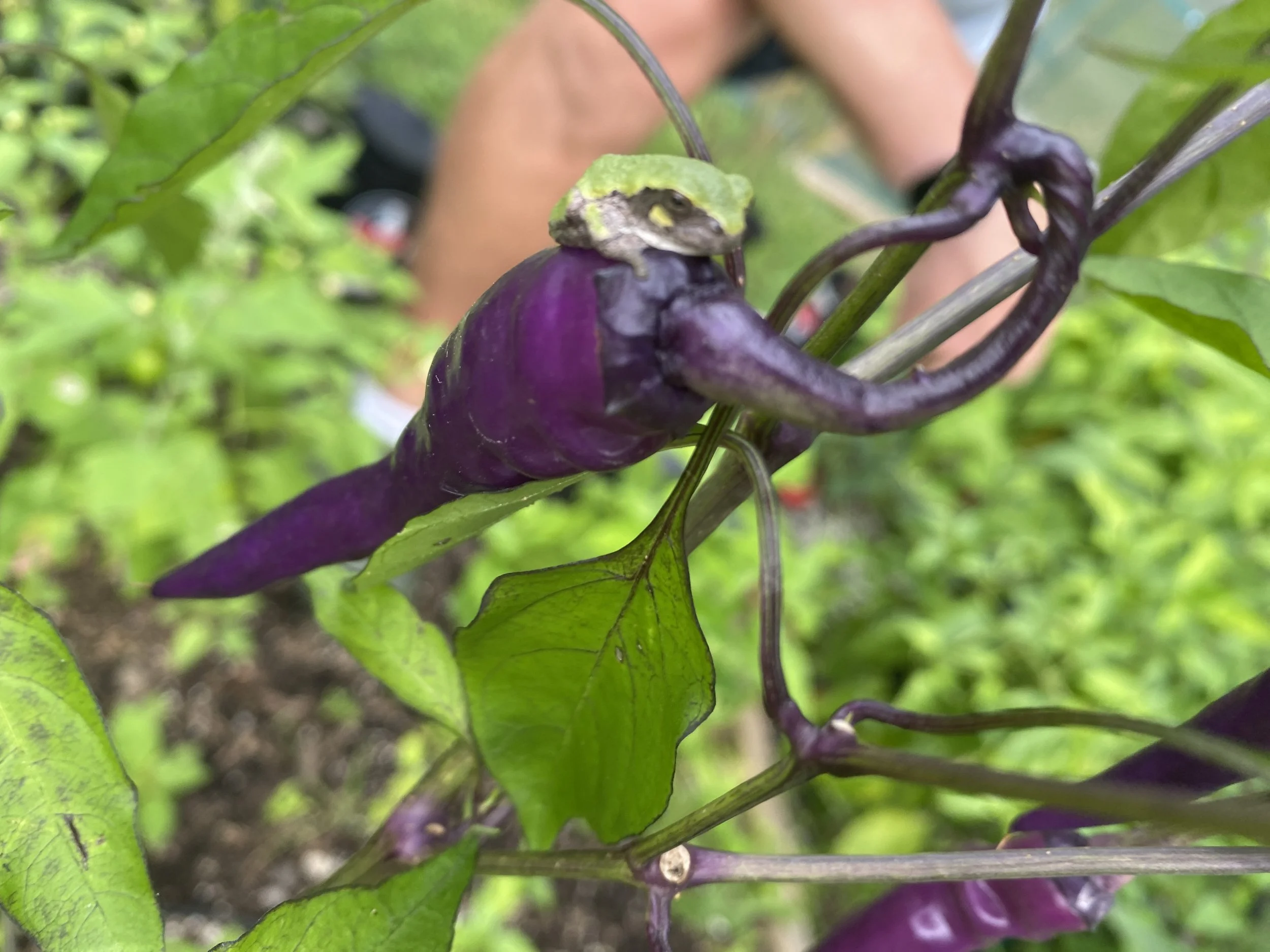 Image 1 of 4
Image 1 of 4

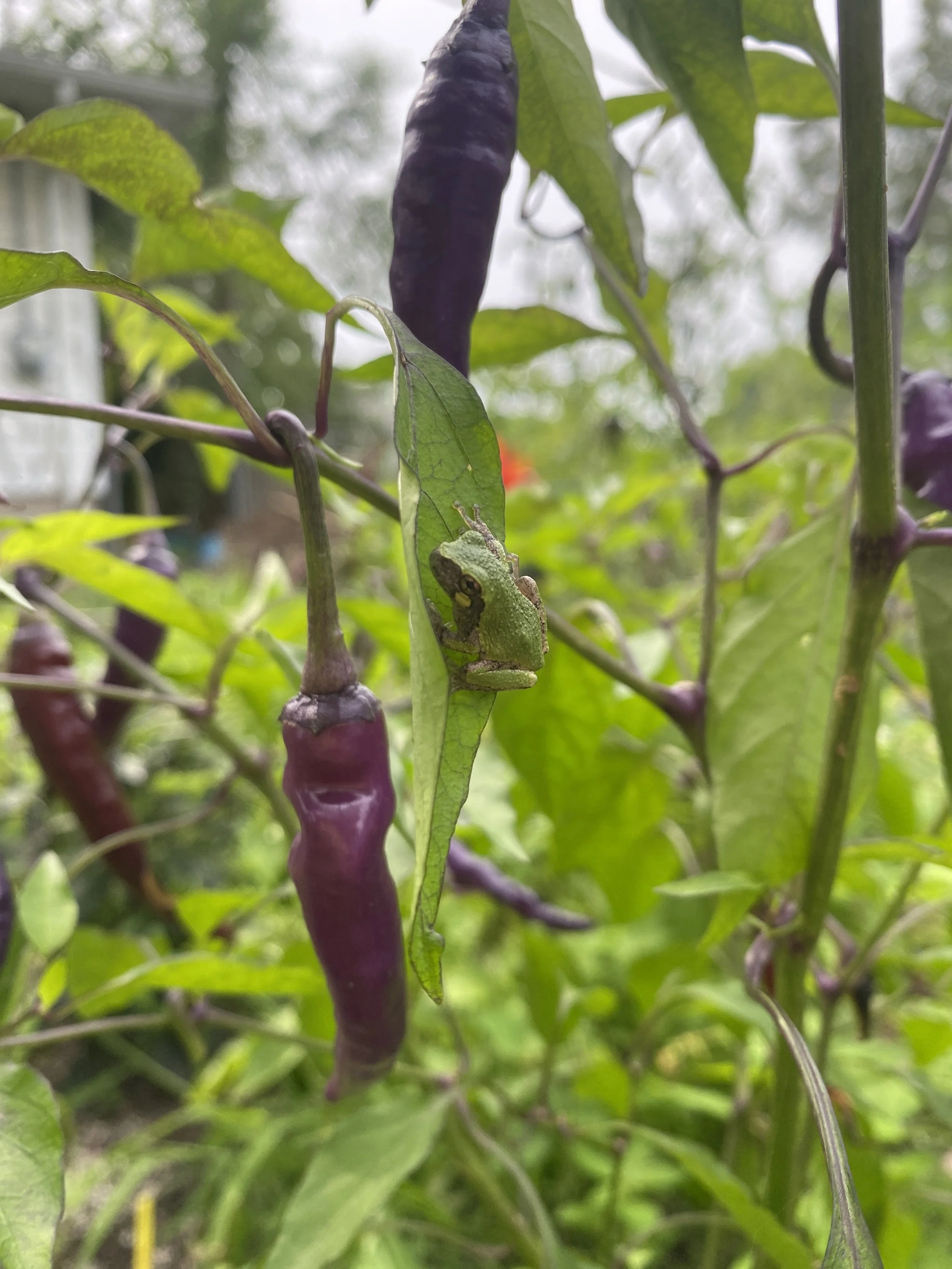 Image 2 of 4
Image 2 of 4

 Image 3 of 4
Image 3 of 4

 Image 4 of 4
Image 4 of 4





Buena Mulata Pepper
William Woys Weaver introduced the world to this pepper from his grandfather's collection. His grandfather received the pepper from African-American folk artist Horace Pippin in 1944. A chameleon-like pepper that undergoes color changes during ripening; violet to pinkish-flesh color, then orange changing to brown, and eventually to a deep red. The long, round pods reach 6 to 7 inches in length and undergo a unique flavor change as they ripen, with the reds being more sweet and meatier than the violet. The stunning plants also make wonderful potted specimens.
8-12 hours of Sun
Ideal Temperature: 70-95 Degrees F
Plant Spacing: 14-18"
Frost Hardy: No
Capsicum annuum
William Woys Weaver introduced the world to this pepper from his grandfather's collection. His grandfather received the pepper from African-American folk artist Horace Pippin in 1944. A chameleon-like pepper that undergoes color changes during ripening; violet to pinkish-flesh color, then orange changing to brown, and eventually to a deep red. The long, round pods reach 6 to 7 inches in length and undergo a unique flavor change as they ripen, with the reds being more sweet and meatier than the violet. The stunning plants also make wonderful potted specimens.
8-12 hours of Sun
Ideal Temperature: 70-95 Degrees F
Plant Spacing: 14-18"
Frost Hardy: No
Capsicum annuum




